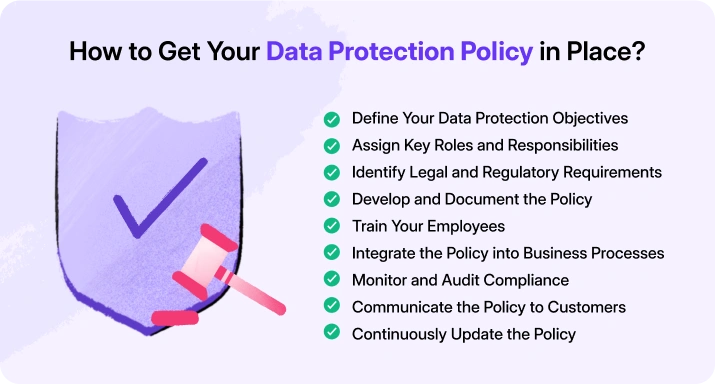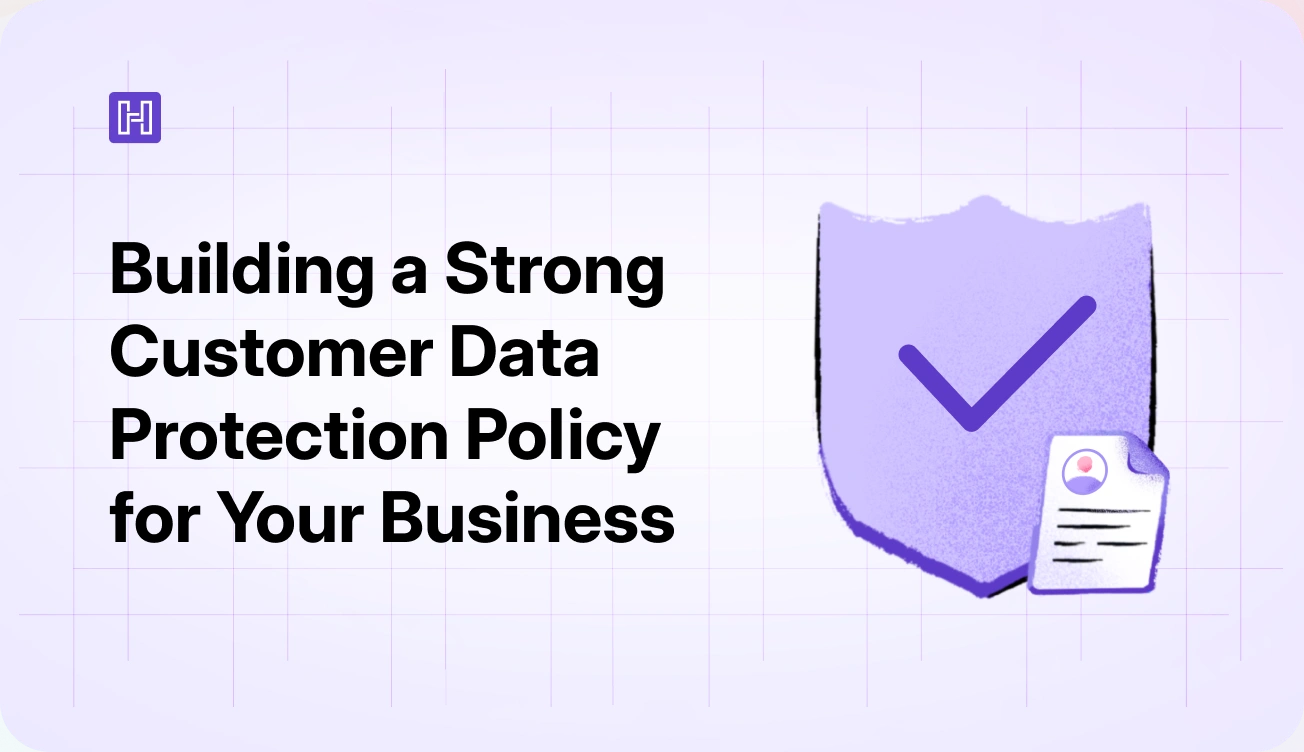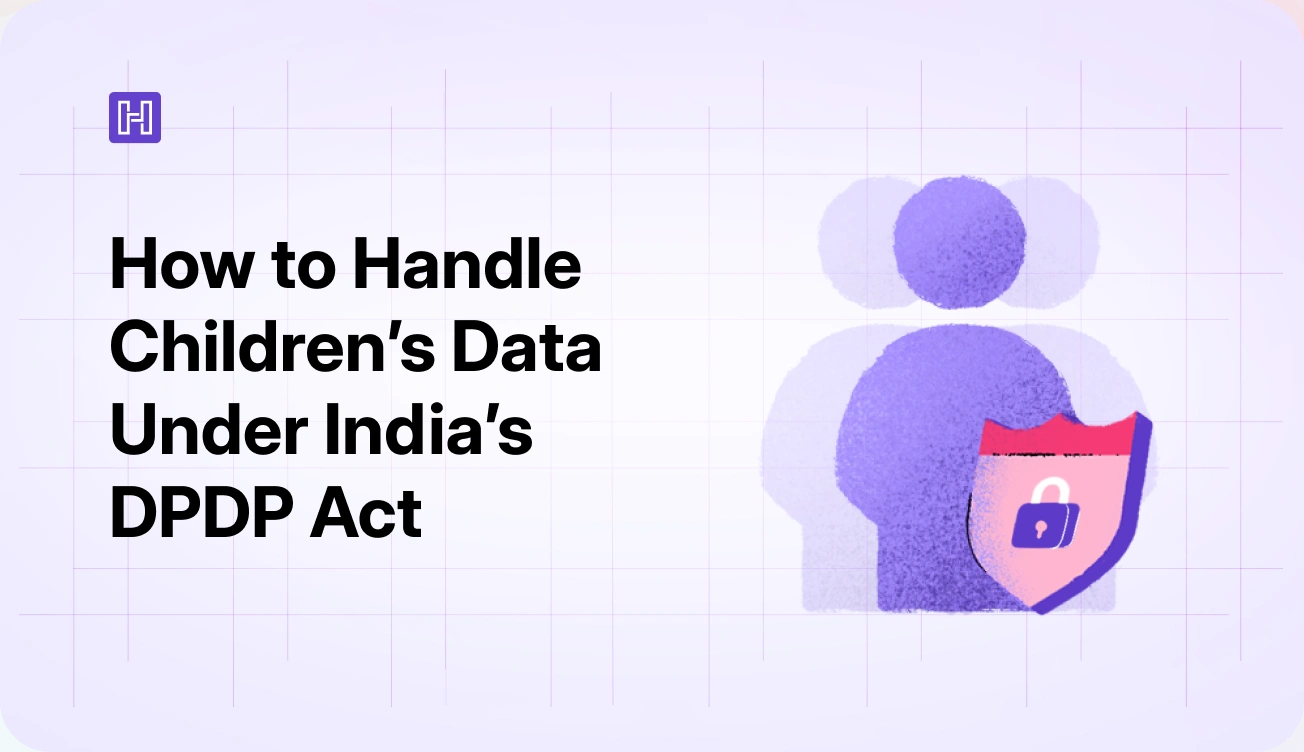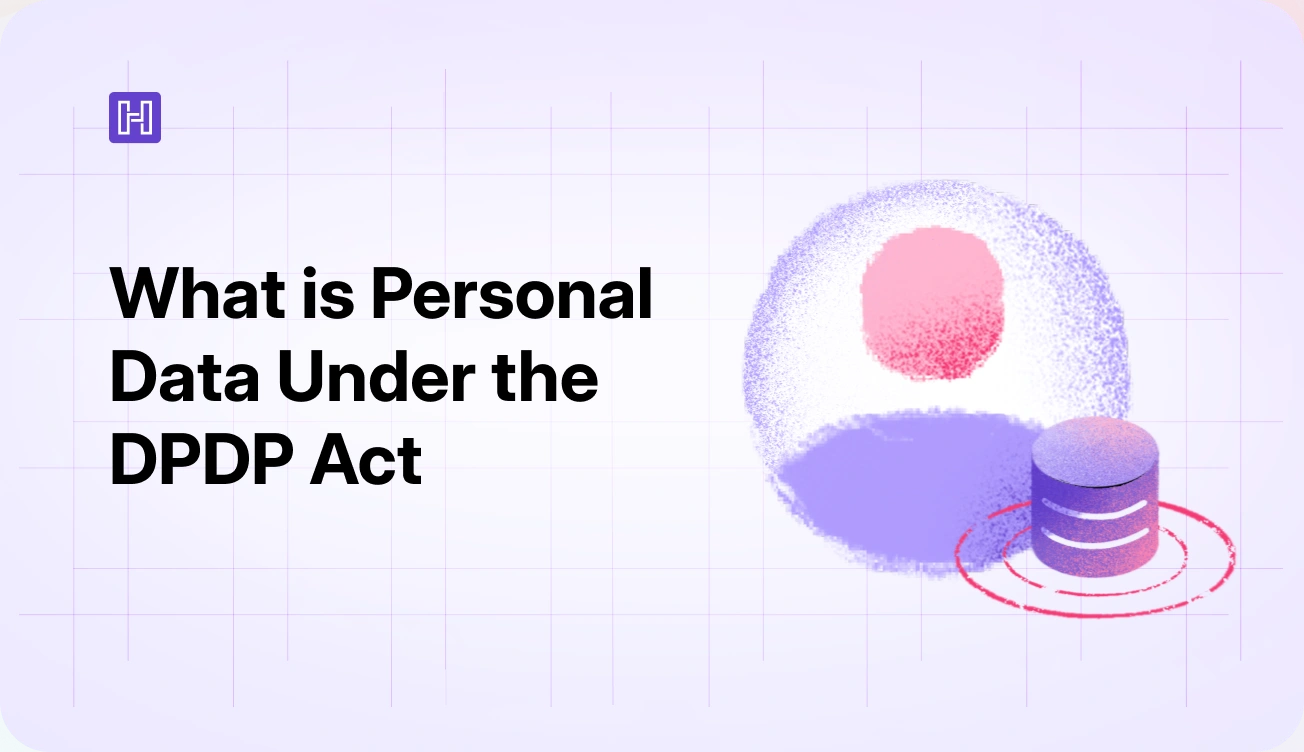The easiest way to check how the digital world has impacted all of us is by simply checking our screen time. According to Exploding Topics, the average screen time has increased from 30 minutes in 2013 to 6 hours 40 minutes in 2024. With more screen time, people are not just consuming content, we are also making purchases and signing up for services. In fact, 48.8% of customer journeys start and end on retailer websites or apps. With this shift, more customers are sharing personal data like email addresses and phone numbers with these companies.
Companies must value this trust by building a robust customer data protection policy. This is more urgent because India’s Digital Personal Data Protection (DPDP) Act 2023 mandates organizations to handle customer data with the highest care and transparency. Data breaches or failure to comply in accordance with the DPDP regulations will result in severe penalties.
So where should you start? Here. This blog will help you understand what a data protection policy must include, best practices, what happens if a data breach occurs and more.
What Does Customer Data Protection Really Mean?
Customer data protection protection is like a digital safety net protecting customer data. When customers sign up for a service or buy a product from a website, they expect the company to keep the data safe from unauthorized access and misuse. In a nutshell, customer data protection consists of policies and practices companies must follow to keep the customer’s personal data safe.
There are several types of customer data requiring protection such as:
Personal Identifiable Information: This type of data includes names, addresses, and phone numbers meaning any type of information that identifies an individual
Financial Information: Credit card numbers and bank account details are examples of financial information that need a high level of data protection
Health Data: Sensitive medical information such as health records and insurance information are personal data. If hackers get access to this data, they can misuse it. Therefore companies must keep it confidential to protect individual privacy
Behavioural Data: How customers interact with data like browsing history that companies use to tailor experiences must be protected to avoid misuse
What Should Your Data Protection Policy Include?
A comprehensive data protection policy includes key components that ensure that you protect customer data and stay relevant to the regulations. Here is the list of three such key components:
Clear Data Protection Goals
By setting up goals, you build the foundation of a robust policy. While deciding the goals, pay attention to two key essential factors: the goals must communicate your commitment towards protecting customer data and outline measurable objectives.
For example, the company decides that 100% of its employees will be trained on the best practices and protocols for data protection within a year. Setting such measurable targets helps you keep track of activities and assess progress more effectively. In addition, it ensures a high level of compliance in all operations and builds customer trust for the long term.
Defining Roles and Responsibilities
Data Controllers and Data Processors are the two key responsibilities for the successful implementation of the data protection policy.
Data Controllers determine how and the purpose behind collecting customer data. It’s their responsibility to ensure compliance with the data protection laws and establish practices to collect, use, and process personal data. For example, an e-commerce company acts as a data controller as it decides what data must be collected from its customers, how they use it in targeted marketing campaigns, and how they protect it.
Data processors process data on behalf of the data controllers based on their instructions. Data processors do not have the authority to decide how they want to process the data. They must function within the security measures of the data controller. For example, Amazon Web Services (AWS) plays the role of data processor as it stores and manages data on behalf of its customers. They process the data according to the instructions and specifications of their client.
Compliance With Local Regulations
A customer data protection policy is incomplete if it doesn’t comply with local regulations. In India, the Digital Personal Data Protection Act (DPDPA) 2023 sets strict guidelines about how companies must manage customer information. Some of the key requirements are obtaining informed consent from customers before collecting their data, implementing strong security measures, and informing the authorities in case of data breaches.
While local regulations are important, companies that have operations in multiple jurisdictions must also follow global regulations like the General Data Protection Regulations (GDPR) and the California Consumer Privacy Act (CCPA). GDPR provides individuals rights to access their information, and request correction, and deletion from the company’s database. Similarly, CCPA allows individuals to know how their data is being collected, opt out of its sale, and request deletion.
Build an airtight customer data protection policy with the right tools
Book DemoBest Practices for Keeping Your Customer Data Safe
There are three best practices to keep your customer data safe:
Data Encryption and Secure Storage
Data encryption converts data into an unreadable code that can only be accessed using the right decryption key. The advantage of encryption is it provides a safety layer in the event of data breaches. If unauthorized individuals hack the encrypted data, they won’t be able to access it. Secure storage
is about storing data in secure environments with strict security measures, in-premise or on the cloud. For example, using a secure cloud storage service eliminates the risk of sharing sensitive data over emails or USB drives.
Access Control and User Authentication
Access limit decides who gets access to secure data in the company database. It’s like handing over keys to the most important rooms in an office to specific individuals only. Access Control ensures that individuals have access to only the information that is necessary for the job. Multi-factor authentication (MFA) is an advanced technique to identify a user based on multiple forms of identification. For instance, telling the user to enter a code sent to their mobile phones after entering the account password.
Regular Audits and Monitoring for Breaches
Regular audits keep your security systems up to date by identifying weaknesses and gaps in compliance with the data privacy measures. The same applies to monitoring customer data to know who accessed their data and when. It’s a proactive approach to identifying data breaches in the system. Create an incident response plan to get the best result from regular system audits and data monitoring. This plan outlines the steps to take during a data breach for swift response and damage control.
How to Get Your Data Protection Policy in Place?
The following are the exact steps to get your data protection policy in place:

Define Your Data Protection Objectives
Clearly define your commitment towards protecting data privacy, setting measuring goals, and aligning the policy with your business values
Assign Key Roles and Responsibilities
Assign responsibilities to specific teams and designate key individuals to oversee the implementation of the data protection policy. This ensures accountability and clear communication among the team members
Identify Legal and Regulatory Requirements
Understanding the regulatory DPDP rules, GDPR and CCPA regulations will help you align the policy with the regulations. This way you can stay legally compliant and avoid paying penalties
Develop and Document the Policy
Create a clear and comprehensive data protection policy outlining the organization’s practices and protocols towards data security. Ensure the policy is written in simple language and easily accessible to the employees
Train Your Employees
Every employee in your company plays a key role in protecting customer data. Their actions can sometimes result in data breaches or non-compliance. Train your employees regularly to keep them updated about the latest regulations and how they’re responsible for securing customer data
Integrate the Policy into Business Processes
Implement the policy objectives into the crucial business processes. Such as the data collection process and storage process to ensure the personal data is secure at all stages
Monitor and Audit Compliance
Audit the security systems to identify gaps with the legal regulations and monitor customer data regularly to avoid data breaches. This way you’re better prepared to avoid cyber attacks and identify areas of improvement.
Communicate the Policy to Customers
Display privacy notices to your customers through different communication in clear and concise language. This builds customer’s trust in your brand and makes them believe in your commitment to protecting their personal data.
Continuously Update the Policy
Keep updating your policy in accordance with the updated laws and regulations. Your policy will always stay effective with the current times and your business processes can run uninterruptedly.
What to Do If a Data Breach Occurs?
Handling a data breach is a tough situation. However, if you are prepared, you can handle the situation swiftly. Here’s a structured approach to guide in such situations:
Prepare for a Data Breach Before It Happens
Risk Assessment: Conduct regular risk assessments regularly to identify vulnerabilities beforehand. For example, in one of the assessments, your security team found out that the password security is weak and could be hacked. So you fortify the password security by using methods like multi-factor authentication.
Employee Training: Train employees on the best cybersecurity practices including understanding safe data handling procedures and recognizing phishing attempts. This way your employees are self-trained to flag suspicious emails or other activities that can cause potential harm
Establish a Breach Response Team: Create a team dedicated team dedicated to handling data breach incidents like a rapid action force team. Ensure that this team consist of members from the legal, IT, and management to get better results.
Data Mapping: Create an up to date map so your team always know where is the customer data stored. For example, a certain database might store sensitive information and may need more priority in terms of protection.
Detect and Confirm the Breach
Monitoring Systems: Advanced monitoring systems alert your team as soon as they detect an intrusion like unauthorized access or suspicious activities.
Alert Mechanisms: Alert mechanisms are actions followed after the system notifies of a data breach. It includes alerting the right people and setting off a prompt series of action
Initial Investigation: The role of the initial investigation is to ascertain if a data breach has actually occurred. This includes checking server logs to analyze the event.
Contain the Breach
Stop the Breach: Take immediate steps to stop any further leaks that can impact other accounts. This might include disabling compromised accounts or shutting down the system temporarily.
Secure Critical Data: Give priority to securing critical data by implementing encryption or access restrictions to prevent exposure
Isolated Affected Systems: Isolate the affected systems by cutting them off from others to stop hackers from getting further access
Assess the Impact
Identify Affected Data: After you have successfully covered the rest of the database from the data breach, analyze what has been compromised. Does it include personal data like names, addresses, and phone numbers? Based on the type of data affected the potential risk can be measured.
Assess the Extent of the Damage: Check the volume of damage. Has the data breach impacted only a handful of accounts or a large extent of the database? And what extent of damage can be expected?
Legal Assessment: Ask your internal legal team or consult external legal experts to understand the next steps according to the DPDP Act.
Notify Affected Parties
Notification Timing: Notify affected individuals within the timeframe specified by the law. Quick notification will help them take precautions
Clear Communication: Maintain transparency with the affected parties by clearly communicating with them how the data breach happened and how are you planning to fix it
Provide Support: Data breaches can be scary for your customers. Support them by setting up hotlines and answering their questions promptly.
Report to authorities
Legal Requirements: Get clarity from your team of legal experts about the legal requirements for informing authorities about a data breach
Documentation: Proper documentation will help you answer to authorities at the time of inquiries. Maintain thorough documentation of the breach including how it occurred, what subsequent steps were taken, and what communications were sent to the affected parties
Communicate with Stakeholders
Internal Communication: Inform internal stakeholders about the breach so they are aware of their responsibilities of handling customer data henceforth
Public Relations Strategy: Develop a strategy to handle external communication about the breach. Keep a consistent messaging across all the platforms
Take Corrective Actions and Prevent Future Breaches
Root Cause Analysis: Conduct deep research to identify the real reason behind the breach. This activity might reveal certain vulnerabilities in your system
Fix Vulnerabilities: After you have identified what is wrong with the system, take steps to fix the vulnerabilities
Strengthen Security: Use stronger security protocols like encryption methods and multi-factor authentication
Review and Update Policies: Keep updating your data protection policies to apply the learnings from data breaches
Learn From the Breach
Post-incident Review: Call a team meeting to conduct a post-incident review and evaluate what worked in your favour and what didn’t go as planned.
Improve Your Data Protection Policy: Take notes and insights from the post-incident review meeting and use them to strengthen your data protection policy. This way you can keep your system well-protected from new threats
How Technology Can Help Secure Your Customer Data
Technology holds the key to securing customer data, enhancing overall security, and automating the entire process. Solutions like consent management platforms help organizations manage user consent in compliance with global data protection regulations like GDPR and CCPA. They automate the entire process of obtaining and storing consent from customers. As a business owner, you don’t have to worry about setting the process as the system takes care of it on your behalf.
Encryption is another example of technology that protects sensitive information by coding the data in a way that hackers cannot read it. This is particularly required for financial details and personally identifiable information. In addition, firewalls also act as barriers to block unauthorized access.
Cloud services are a great choice for businesses as they offer scalable solutions for data storage and processing. They often incorporate built-in security features such as encryption and access controls. Using reputable cloud providers ensures that the customer data is stored securely with regular backups and disaster recovery options.
To manage data protection needs effectively, check out HyperTrust. Our platform offers advanced tools to secure customer data and ensure compliance with evolving regulations.
FAQs
1. What is a customer data protection policy?
A customer data protection policy is a document that outlines an organization’s guidelines to protect the privacy of customer information. It decides how the data is collected, stored, used, and processed by the company. It also shows the company’s commitment to data privacy and builds customer trust.
2. How to develop a data protection policy?
Here are the steps to develop a data protection policy:
- Define the data covered and policy goals
- Outline the basis for data collection and processing
- Describe organizational and technical measures to protect customer data
- Provide a plan to handle data breaches
- Assign responsibilities to team members for data protection
- Outline the methods for training employees on data regulations
3. How can businesses protect their customers’ data?
By using strategies like network security, data encryption, and password protection companies can protect their customers’ data. Using a trusted consent management platform that automates collecting and storing consent according to the regulations is also a formidable step.
4. How to ensure that data protection policy complies with Indian data privacy laws?
The data protection policy must adhere to the requirements of the DPDP Act to comply with the Indian data privacy laws. The policy must ensure that the data is collected for legitimate purposes only.





